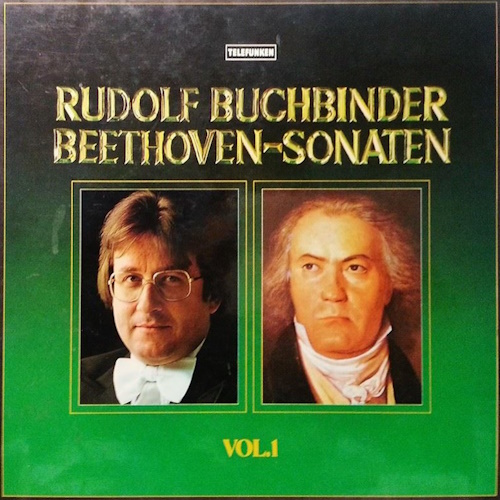 |
|
3 LPs
- 6.35472 FK - (p) 1980
|
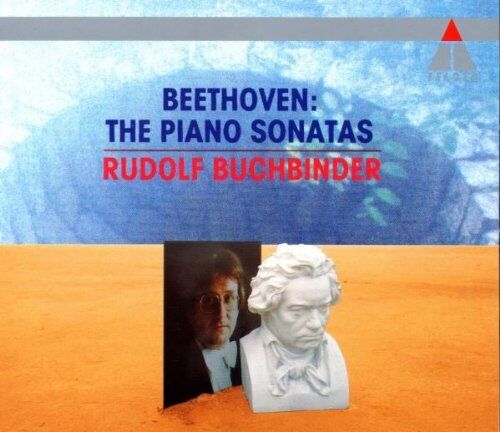 |
| 8 LCDs -
9031-71719-2 - (c) 1990 |
|
KLAVIERSONATEN
- Volume 1
|
|
|
|
|
|
|
|
| Ludwig van
BEETHOVEN (1750-1827) |
Klaviersonate
Nr. 3 C-dur, Op. 2 Nr. 3 - Joseph
Haydn gewidmet (Komponiert um
1795)
|
|
24' 08" |
|
|
-
Allegro con brio
|
9' 30" |
|
A1 |
|
-
Adagio |
6' 43" |
|
A2 |
|
-
Scherzo: Allegro |
3' 05" |
|
A3 |
|
-
Allegro assai
|
4' 50" |
|
A4 |
|
Klaviersonate
Nr. 7 D-dur, Op. 10 Nr. 3 - Der
Gräfin Anna Margarete von Browne
gewidmet (Komponiert 1796/98)
|
|
22' 21" |
|
|
-
Presto
|
6' 56" |
|
B1 |
|
-
Largo e mesto
|
8' 27" |
|
B2 |
|
-
Menuetto: Allegro
|
2' 50" |
|
B3 |
|
-
Rondo: Allegro
|
4' 08" |
|
B4 |
|
|
|
|
|
|
Klaviersonate
Nr. 14
cis-moll,
Op. 27 Nr. 2 Sonata
quasi una fantasia
"Mondscheinsonate" -
Dem Gräfin
Giulietta
Guicciardi (Komponiert
1801)
|
|
13' 16" |
|
|
-
Adagio sostenuto
|
4' 46" |
|
C1 |
|
-
Allegretto |
1' 32" |
|
C2 |
|
-
Presto agitato
|
6' 58" |
|
C3 |
|
Klaviersonate
Nr. 25
(Sonatine)
G-dur,
Op. 79 (Komponiert
1809)
|
|
7' 44" |
|
|
-
Presto alla tedesca
|
3' 00" |
|
C4 |
|
-
Andante |
2' 48" |
|
C5 |
|
-
Vivace |
1' 56" |
|
C6 |
|
Klaviersonate
Nr. 23 f-moll,
Op. 57
"Appassionata" - Dem
Grafen Frany von
Brunswik gewidmet
(Komponiert 1804/06)
|
|
21' 17" |
|
|
-
Allegro assai · Più allegro
|
8' 35" |
|
D1 |
|
-
Andante con moto
|
5' 08" |
|
D2 |
|
-
Allegro ma non troppo: Presto
|
7' 34" |
|
D3 |
|
|
|
|
|
|
Klaviersonate
Nr. 17 d-moll, Op. 31 Nr. 2 "Der Sturm"
(Komponiert
1801/02)
|
|
24' 27" |
|
|
-
Largo · Allegro
|
8' 27" |
|
E1 |
|
-
Adagio
|
7' 10" |
|
E2 |
|
-
Allegretto
|
8' 50" |
|
E3 |
|
Klaviersonate
Nr. 18 Es-dur, Op. 31 Nr. 3
(Komponiert 1801/02)
|
|
21' 45" |
|
|
-
Allegro
|
7' 33" |
|
F1 |
|
-
Scherzo: Allegretto vivace
|
4' 27" |
|
F2 |
|
-
Menuetto: Moderato e grazioso |
5' 07" |
|
F3 |
|
-
Presto con fuoco
|
4' 38" |
|
F4 |
|
|
|
|
Rudolf BUCHBINDER,
Klavier (Steinway-Flügel)
|
|
|
|
|
|
Luogo
e data di registrazione |
|
-
|
|
|
Original
Editions |
|
Telefunken
| 6.35472 FK | 3 LPs | LC 0366 |
durata: 46' 29" · 43' 17" · 46'
12" | (p) 1981 | ANA | stereo
|
|
|
Edizione CD
|
|
Teldec |
9031-71719-2 | 8 CDs | LC 3706 |
(c)
1990 | DDD/DMM | stereo |
Klaviersonaten Nr. 1-32
Teldec | 8.43415 ZK | 1 CD
| LC 3706 | (c) 1986 | DDD/DMM
| stereo | Klaviersonaten Nr. 3
Teldec
| 8.43476 ZK | 1 CD | LC 3706 |
(c)
1987 | DDD/DMM | stereo |
Klaviersonate Nr. 7
Teldec |
8.42913 ZK | 1 CD | LC 3706
| (c)
1983 | DDD/DMM | stereo |
Klaviersonate Nr. 14, 23
Teldec
| 8.43478 ZK | 1 CD
| LC 3706 | (c)
1987 | DDD/DMM |
stereo |
Klaviersonate Nr. 25
Teldec
| 8.43334 ZK |
1 CD | LC 3706
| (c)
1986 | DDD/DMM
| stereo |
Klaviersonate
Nr. 17, 18
|
|
|
Executive
Producer |
|
-
|
|
|
Recording
Engineer |
|
-
|
|
|
Cover |
|
Ludwig
van Beethoven, Gemälde von J. W.
Mähler, 1815
|
|
|
Note |
|
- |
|
|
|
|
|
BUCHBINDER
BEETHOVEN
32 KLAVIERSONATEN

3 LPs - 6.35472 FK - (p) 1980
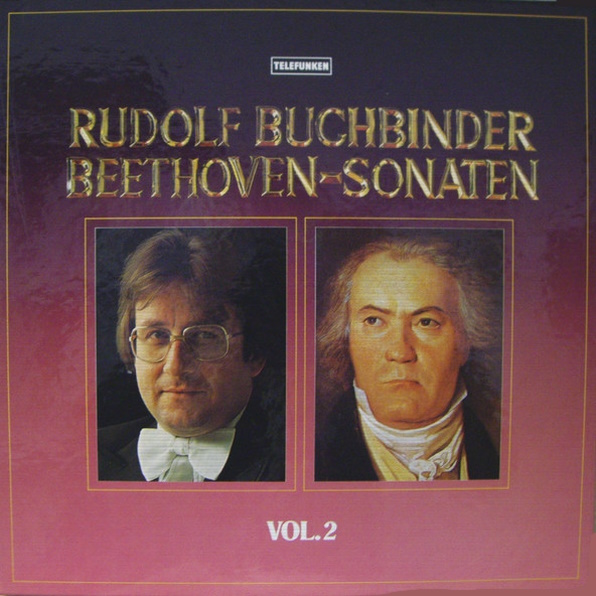
2
LPs - 6.35490 FK - (p) 1981
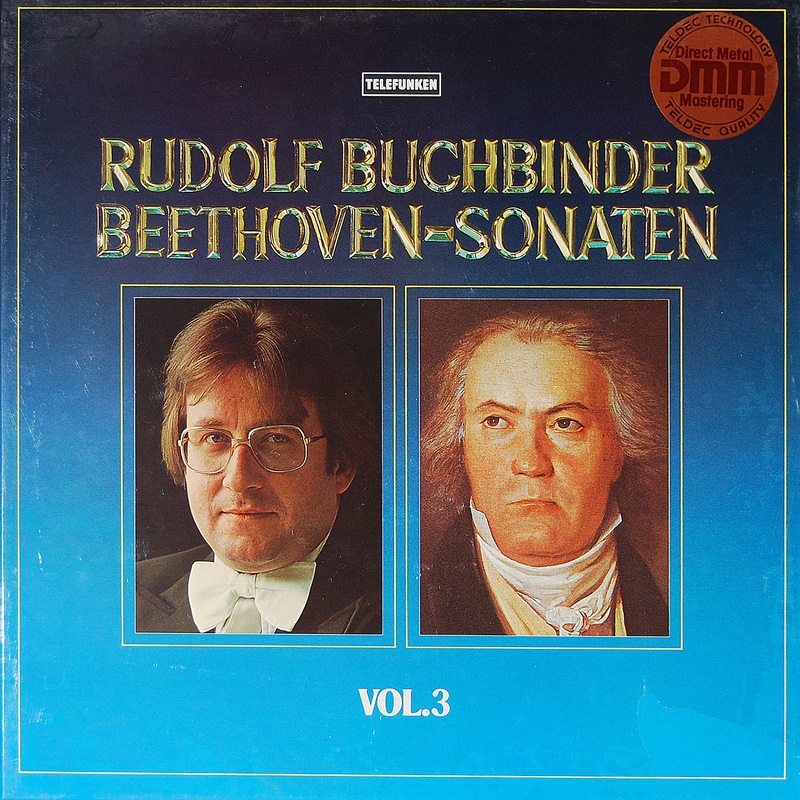
3 LPs -
6,35581 FK - (p) 1982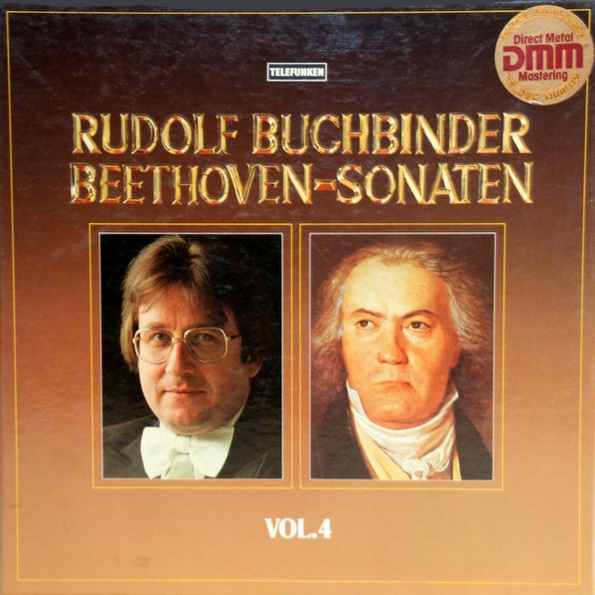
3 LPs -
6.35596 FK - (p) 1982 |
RE-RELEASE
ON
COMPACT DISC (DMM)
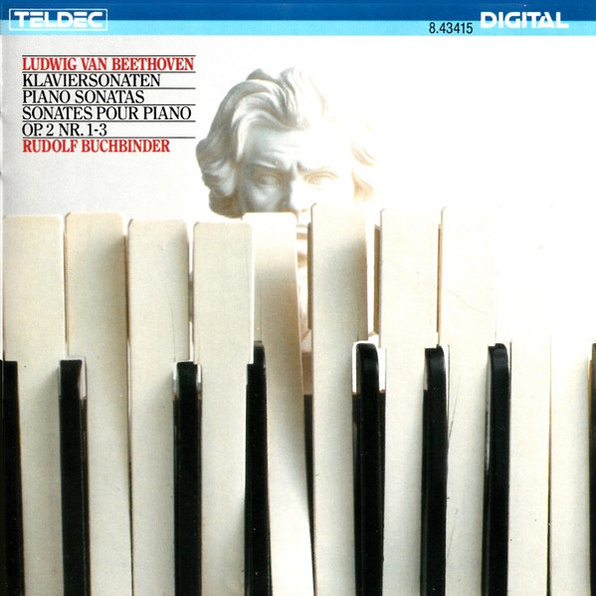
1 CD - 8.43415 ZK - (c) 1986
(Nr.3)
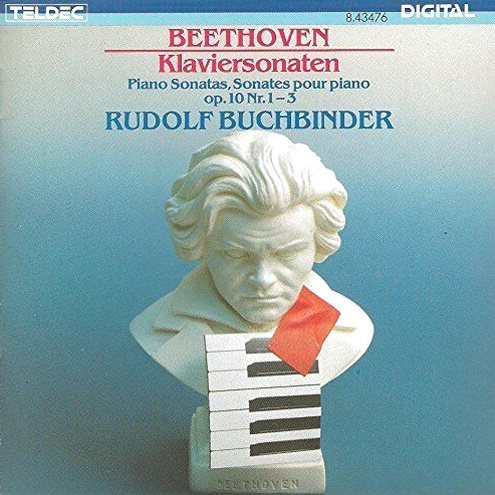 1 CD - 8.43476 ZK
- (c) 1987 (Nr.7)
1 CD - 8.43476 ZK
- (c) 1987 (Nr.7)
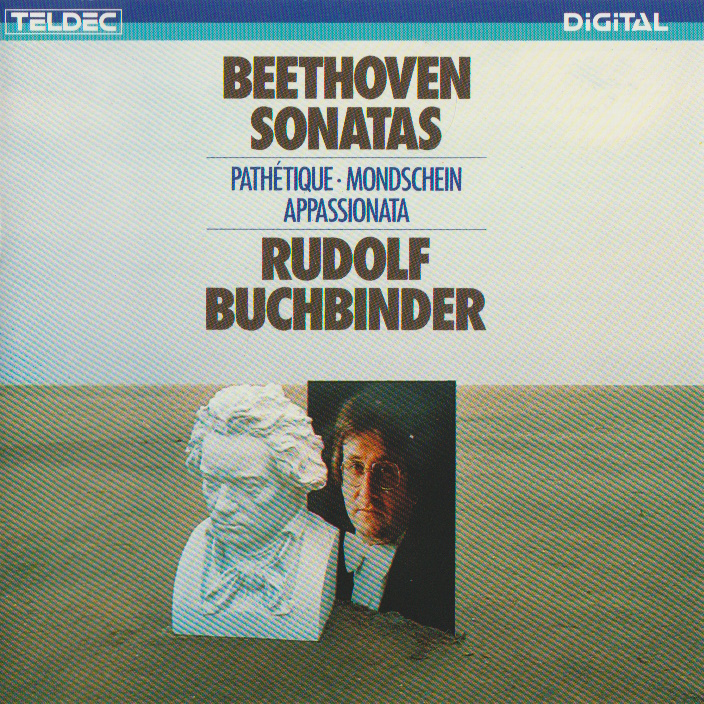
1 CD -
8.42913 ZK - (c) 1983
(Nr.14,23)
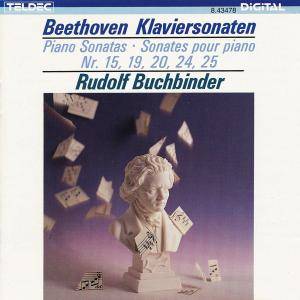
1 CD -
8.43478 ZK - (c) 1987
(Nr.25)
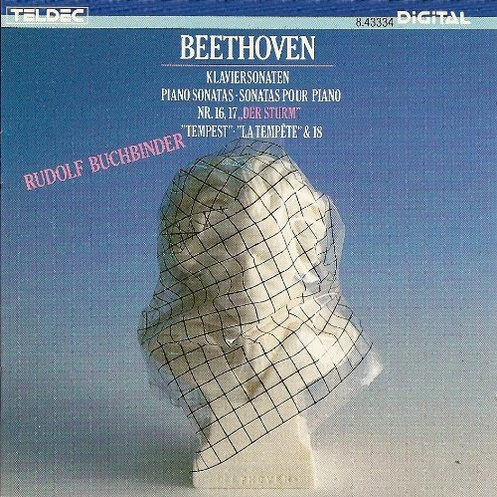
1 CD -
8.43334 ZK - (c) 1986
(Nr.17,18)
|
Piano
Sonatas Nr. 3 C-dur, Op. 2
Nr. 3
Even the
first compositions produced by
Beethoven in Vienna were fully
mature works: the three Piano
Trios of op. 1, written in
1793/4 and dedicated to his most
eminent patron, Prince Carl
Lichnowsky, of whom he was to
say in 1805: ”He is truly one of
my most faithful friends and the
promoter of my art - something
fairly unusual in that class,”
and the three Piano Sonatas of
op. 2, dedicated to Joseph
Haydn. When Beethoven moved to
Vienna from Bonn in the autumn
of 1792 - temporarily, as he
thought - he became Haydn’s
pupil for about a year. Not
merely does the dedication
express the customary gratitude
shown to a teacher, but the
three sonatas represent what the
young composer, whom Haydn had
as early as 1795 described, in a
diary entry, as a genius, had
learnt from his teacher’s style
rather than from his lessons. In
this context it is worth
recalling the prophetic words
with which Count Waldstein
concluded his entry in
Beethoven’s album on the eve of
his departure from Bonn: “By
unremitting diligence you will
receive the spirit of Mozart
from the hands of Haydn."
In 1795 Beethoven wrote the
three sonatas of op. 2,
incorporating in them some
previously composed material,
and they were published a year
later. The richness and
inventiveness which they display
is divorced from any kind of
formalism. No. 3 in C, one of
Beethoven's most frequently
played sonatas, is conceived on
the largest scale and contains
elements of orchestral
sonorities, as opposed to the
"chamber music” scale of
No. 1 and the pianistic
virtuosity cf No. 2. The first
movement of this sonata is
sometimes described as a piano
concerto in disguise, because of
the interesting changes in the
tone colour and figuration, and
particularly on account of the
strange free cadenza which is
interpolated between the end of
the recapitulation and the coda.
However, Beethoven’s music is
particularly characterised by
the fact that traditional types
of style, such as ”chamber
music,” “pianistic” etc. are
constantly reshaped, discarded,
indeed stripped of their
traditional, typical effect. As
far as the A flat major cadenza
in the first movement is
concerned, it is reminiscent
neither in its placing nor in
its internal form of a true
concerto cadenza; this passage
is free improvisatory
soliloquising, and a last
product of the surprise element
in this movement, which is
derived from constantly changing
confrontations with and
digressions from the terse
opening motif, which, taken by
itself, would have led one to
expect the movement to take an
entirely different course.
The second movement, an Adagio
in the third-related key
of E which moves through
manifold ranges of expression as
though in a dream, appears to be
just one vast elaboration of the
improvisation at the end of the
first movement. In 1842
Beethoven’s pupil Carl Czerny
stated in his notes on the
interpretation of the sonatas
that this adagio already
displayed a romantic tendency
that later enabled Beethoven to
create a type of composition
which raised instrumental music
to the level of painting and
poetry. Particularly strange is
the sudden eruption in the
second half, fortissimo, in the
contrasting key of C, an
isolated variant of the two bars
of the first subject - but it
turns out to be merely an
obvious harking back to the
beginning of the first movement;
material that has already been
encountered is treated as though
it were entirely new. Details
such as these indicate what
Beethoven put into his
compositions. In the Scherzo,
strangely enough, the violence
does not flare up until the Trio
is reached and the triplets
create the illusion of increased
speed. The motivic element of
the movement centres, in
essence, on the contrast between
the major and minor seconds in
the two versions of the first
motif. At the very end of the
coda, which flits from mighty
octave leaps to a pianissimo,
the interval is reversed and the
second rises from B to C. A
reworking of the material down
to its smallest components,
typical of Beethoven’s writing
from then on, is one of his
finest legacies from Haydn.
Piano
Sonata Nr. 7 D-dur, Op. 10
Nr. 3
The three sonates
of op. 10 were written shortly
afterwards, in the periodo
1796/98, as was the Sonata op.
7; they were published in 1798
along with the Trio for
Strings op. 9 Op. 10 No. 1 in
C minor is the most popular,
but the most important,
without a doubt, is No. 3. Its
core is the slow movement,
Largo e mesto, a mighty
lamentation, a tragic song of
mourning in pallid hues,
expressing in its nuances of
light and shade, as Beethovens
friend and amanuensis Anton
Schindler claims he was told,
the state of mind of someone
who has become a prey to
melancholy. This largo
introduces new sounds into
piano music which exceed the
melancholy of some of Mozart’s
pieces or the expressive
eccentricity of C. P. E. Bach;
some passages almost seem to
anticipate Liszt. Three
decades later Czerny wrote:
”This Adagio is one of
Beethoven’s most magnificent,
but also most melancholy.”
However, the irritation caused
to Beethoven’s contemporaries
by this piece, which they felt
to be obscurely dark, was
expressed in a review in 1798:
”The superfluity of ideas, of
which an aspiring genius
generally manages to rid
himself, still frequently
drives him veritably to pile
his wild thoughts on top of
one another and to arrange
them in a most peculiar
manner. Thus he often descends
to a sombre art or an
artificial sombreness which is
a drawback rather than an
advantage for the overall
effect...” Evidently it was
not only the late works of
Beethoven that appeared
incomprehensible. The bright
first movement is in marked
contrast; incessant rapid
motion, the progress of which
is almost entirely derived
from a single short motif.
Similarly, the Finale, with
its wittily cheerful interplay
of question and answer. The
only movement which seems to
have any emotional connection
with the Largo, by providing
some relaxation, is the
Minuet, which is in major
throughout; as in op. 2, No.
3, the allegro tempo does not
assert itself until the middle
section, with its demanding
triplets and pointed upbeats,
derived from the minuet
subject, is reached.
Piano
Sonata Nr. 14 cis-moll, Op.
27 Nr. 2 "Mondscheinsonate"
Beethoven called both works of
op. 27, written in 1800/01,
”Sonata quasi una Fantasia,”
in order to draw attention to
their deviation from the usual
form; the movements merge into
one another as in a Fantasia,
and in op. 27. No. 1 they are
even formally interwoven. The
first movement is ternary, with
two different tempi; towards
the end of the last movement
the Adagio is echoed - an
anticipation of techniques
employed by Beethoven in his
late works. The Sonata in C
sharp minor, although, and
perhaps because, it is
certainly not one of his
greatest works, has attained a
popularity that is not easily
explained. Thus, a Russian
Beethoven enthusiast
complained that in Paris at
the end of the 1820s only
three of Beethoven’s sonatas
were ever played: the one in A
flat op. 26; op. 27, No. 2 and
the ”Appassionata.” Beethoven
himself is supposed to have
told Czerny that people were
always talking about the
sonata in C sharp minor, for
all that he had certainly
written better pieces. No
doubt the work owes much of
its popularity to the first
movement. The Berlin critic
and poet Ludwig Rellstab, for
instance, imagined himself in
a boat on the moonlit Lake of
Lucerne (hence the name
"Moonlight Sonata”); others
heard in it a lament for the
dead, Czerny wrote: ”It is a
nocturnal scene with the
voices of a ghost mourning
from afar." There has been
speculation, too, about a link
beetwen the work and the
dedicatee, the young Countess
Giulietta Guicciardi, to whom
Beethoven was close; she may
possibly have been the
addressee of the much debated
letter to the “Immortal
Beloved.” From that point of
view the sonata is the
pessimistic expression of
hopeless love, which surely is
too romantic, too subjective,
too facile an interpretation.
Examined from the viewpoint of
a fantasia, the Adagio would
appear to be a large, dreamily
improvisatory introduction
followed first by a contrasting
short central movement in the
major in the manner of an
intermezzo, and then by the
principal movement proper, a
Presto in the same key as the
Adagio, C sharp minor, a
taxing piece that races along,
a true sonata movement in
form.
Piano
Sonata Nr. 25 (Sonatine), Op.
79
The Sonatina op. 79, written in
1809, is, like a piece of light
relief, over-shadowed by greater
works: the Choral Fantasia op.
80; the Emperor Concerto; the
String Quartet op. 74; the
incidental music for ”Egmont”
and the Sonata op. 81a "Les
Adieux." In a letter to his
publishers Beethoven expressly
described the work which,
incidentally, he wanted
published with its predecessor,
op. 78, as a ”Sonatine facile."
Until the relevant sketches were
discovered it was thought that
this was an early work which,
like the piano sonatas of op. 49
or the Capriccio “The rage over
the lost penny," he had simply
published much later. Many
details, however, militate
against this view, for example
the not immediately apparent
structural and thematic linking
of the three movements by the
interval of a third, which is
common to all of them. As
Joachim Kaiser puts it, ”anyone
who analyses the sonata
carefully should be able to
prove without difficulty
something that no sensible
person would dispute, namely
that this work, which is never
tediously regular or
pedantically dry, obviously
comes from the hand of the
mature Beethoven.” Incidentally,
Czerny omits it from the
catalogue of sonatas, as he does
both works of op. 49; he
therefore, unlike later
catalogues, acknowledges not 32
but only 29 "great sonatas,
which by themselves would suffice
to render his name immortal."
Piano
Sonata Nr. 23 f-moll. Op. 57
"Appassionata"
The ”Appassionata,” the name of
which, like so many others, is
not Beethoven’s own but was
added by a publisher in 1834,
was composed in 1804/05, in a
period which saw a number of
other great works, among them
the Waldstein Sonata, the Triple
Concerto and notably ”Fidelio.”
Sketches for the sonata, which
is dedicated to Beethoven's
friend and patron Count Franz
von Brunsvik, are contained in a
notebook which is mostly taken
up with work on the opera.
Beethoven’s pupil Ferdinand Ries
tclls the following story of the
composition of the sonata:
"Throughout the whole of a long
walk, during which we lost our
way to such an extent that we
did not return to Döbling until
eight o’clock, he had been
muttering and sometimes howling
to himself, always up and down,
without singing any specific
notes. When I asked him what he
was doing he replied: ’I have
just thought of a theme for the
final Allegro of the sonata.’
When we got indoors, he hurried
to the piano without even
removing his hat. I sat down in
a corner, and soon he had
forgotten my presence. Then he
thumped away for at least an
hour at the new, beautiful finale
of the sonata.” This finale,
linked directly to the tranquil
variations of the third movement
by strident dissonances, rages
like a ceaseless tempest;
virtuosity, never an end in
itself, is totally subservient
to expressiveness. The movement
hardly ever strays from the
minor, there is no gleam of
light, no solace. Indeed in the
presto coda, which at first
introduces a new, pounding
theme, the furious arpeggios and
broken chords which dominate the
whole movement develop into
thunderous sounds that erupt
into an apocalyptic uproar. In
abstract terms the first
movement, too, is largely
constructed of simple broken
triads; the exposition is not
repeated in the usual manner,
but is like a fantasia in the
grand concertante style with
continuous variation on two
themes, the second one being
merely a kind of free inversion
of the first. As in the Finale,
there is a stretta coda, but
after hugely massed chords it
subsides quite unexpectedly into
a wan pianissimo. The whole
movement is permeated by a
knocking motif which in the
recapitulation disturbingly
underlies the first subject for
some time and seems to
foreshadow the opening of the
fifth symphony.
Piano
Sonatas Nr. 17 d-moll, Op. 31
Nr. 2 "Der Sturm - Nr. 18
Es-dur, Op. 31 Nr. 3
Beethoven wrote the three
sonatas of op. 31 in 1801/02,
during a period of upheaval
marked by his personal crisis,
the first signs of his deafness
(”Heiligenstadt Testament,"
1802); but it was also a period
of artistic upheaval. “I am not
very pleased with the works that
I have written to date. As from
today, I shall embark on a new
course” is what, according to
Czerny, Beethoven said to the
violinist Wenzel Krumpholz
(presumably in 1802). This new
course manifested itself most
clearly in the ”Eroica,” written
in 1803, and representing an
entirely new symphonic style;
but it is also evident in his
piano works, such as the
Variations op. 35 (1802) and not
least in the Sonatas of op. 31,
particularly in Nos. 2 and 3,
which in many respects appear to
continue the experiments in form
contained in the two sonatas
”Quasi una Fantasia” of op. 27.
Czerny: "Shortly after this
event” (the remark quoted above)
"three sonatas appeared, in
which can be observed the
partial realisation of his
resolve.” Exceptionally, the
Sonata in D minor has only three
movements. The middle movement
is a broadly conceived Adagio
with vast sonorities, fanning
out in an almost orchestral
fashion, in which various
registers answer one another and
a sublime, slow melody is
embellished by remarkably
detailed figurations. The last
movement is an Allegretto,
clearly developed from the
broken chord; its form is a
mixture of rondo and sonata.
According to an anecdote related
by Czerny, Beethoven got his
inspiration for the kinetic
energy which infuses the
movement from watching a
horseman who rode past his
window one day. But when
Schindler questioned the
composer about the significance
of this sonata and of the
”Appassionata," he is said to
have replied, quite casually:
“Read Shakespeare’s ’Tempest’!"
The Sonata in E
flat has four movements ; the
second, however, is a Scherzo in
duple time, of a humorous
character which in the case of
Beethoven means grotesque, full
of surprises and constant
dynamic and rhythmic changes.
The third movement is a brief
Minuet, which appears from its grazioso
strain to be intended as a
substitute for the missing slow
movement. But even more than in
these deviations in form from
the accepted rule, the “new
course” can be discerned in what
may be described as the
developmental character of the
form: the manner in which the
thematic material not only
continues to change, but is
presented not as a structure
which is complete in itself but
as one still in the process of
evolution. Thus the first subject
of the opening movement of op.
31, No. 2 is only recognised as
such when at long last the key
and the basic tempo are
established in bar 21: after a
rudimentary introduction one
does not, as one might expect,
encounter the subject but rather
its continuation and
elaboration. The “subject” - it
barely accords with the accepted
definition of the term - has been
more or less concealed in the
seemingly improvisatory
interplay of the largo broken
chords and violinistic scales of
the opening. In the
recapitulation the “subject” is
even more completely obscured by
recitativic interpolations,
rather as though it were a
development section; there is no
corresponding D minor passage
(as in bar 21), but in its place
there appears a passage in the
contrasting key of F sharp
minor, the opening key of the
development, which gives an
impression of being entirely
new. No less improvisatory is
the beginning of the Sonata in E
flat, opening with a bird call in
the subdominant and thus
strictly dissonant, as though it
were an answering phrase
replying to a question that has
not actually been posed. The
same device is again employed in
the last movement of the same
sonata: the first figure is not
like a beginning, but is a turn
of phrase which is a typical
ending.
Jean
Meuchtelbach
|
|
|
|
|